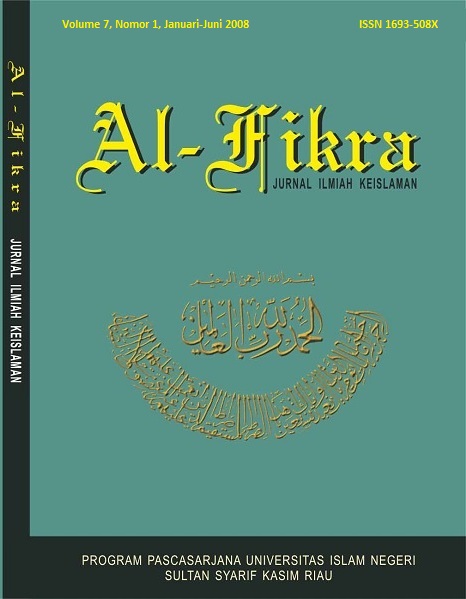PRINSIP PEMIKIRAN ASURANSI ISLAM
DOI:
https://doi.org/10.24014/af.v7i1.3789Keywords:
Islam, Insurance, perspectiveAbstract
Both Syariah Life Insurance and Conventional Insurance basically have the same objective, that is, management or risk-solving. The basic difference between the two only lies on their management. The management of the conventional insurance risk is in the form of transfer risk of the customers to the insurance companies, whereas the Syariah Life Insurance aims at helping each other among the customers and bear the risk together (risk- sharing). Another difference lies on how to manage the components of the insurance product. In this respect, the Syariah Life Insurance embraces Syariah investment system and is free from ribawi, gharar dan maysir. The difference can also be seen from their contract system (akad) that is related to the management of the insurance funding as it is bound to the premium and profit.
References
Antonio, Muhammad Syafi’i, Asuransi dalam Persepektif Islam, (Jakarta: Syarikat Takaful Indonesia, 1994)
Departemen Agama RI, Al-Qur’an dan Terjemahnya, ( Surabaya: CV. Jaya Sakti )
Dewan Asuransi Indonesia, Undang-Undang Republik Indonesia Nomor 2 Tahun 1992 dan Peraturan Pelaksanaan Tentang Usaha Peransuransian, Edisi 2003.
Greene, R Mark, Life and Health Insurance Compacines as Financial Institutions, 1984.
Mehr, I Rober, Life Insurance Theory and Practice, 1985, dikutip dalam Syakir Sula, Muhammad, Asuransi Syaria’ah Konsep dan Sistem operasional, (Jakarta: Gema Insani Press, 2004)
Munawwir, Ahmad Warson, Al-Munawwir Kamus Arab-Indonesia, Cet. Ke- 14 (Yogyakarta: Pustaka Progresif, 1997)
Qardhawy, Yusuf, Peran Nilai dan Moral dalam Perekonomian Islam, (Jakarta: Rabbani Press, 2003)
Sukarno, Ahmadi, Asuransi Islam dalam Tinjauan Sejarah dan Persepektif Ulama, Jakarta: PPS UIN Syarif Hidayatullah, 2003)
Yafie, Ali, Asuransi dalam Pandangan Syariat Islam, Menggagas Fiqh Sosial, (Bandung: Mizan, 1994)
Downloads
Published
Issue
Section
License
Authors who publish with this journal agree to the following terms:
Authors retain copyright and grant the journal right of first publication with the work simultaneously licensed under a Creative Commons Attribution 4.0 International License that allows others to share the work with an acknowledgement of the work's authorship and initial publication in this journal.
Authors are able to enter into separate, additional contractual arrangements for the non-exclusive distribution of the journal's published version of the work (e.g., post it to an institutional repository or publish it in a book), with an acknowledgement of its initial publication in this journal.
Authors are permitted and encouraged to post their work online (e.g., in institutional repositories or on their website) prior to and during the submission process, as it can lead to productive exchanges, as well as earlier and greater citation of published work.

